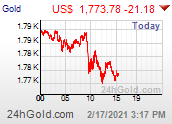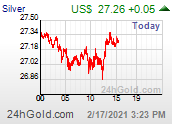Two styles of beef production: Is one criminal in Colorado?
While we were in Fairplay covering the Vern Wagner “Fitness” hearing, we met Davis Waldo, an interesting gentleman who was going to testify on Vern’s behalf. He had written a document to submit to the court, which he gave us permission to publish here.
Opinions of Davis Waldo, a lessor of 35 acres to Vern Wagner for grazing and president of the Elkhorn Grazing Association
Re: temporary injunction and request for permanent injunction against Vern Wagner by Colorado Dept. of Agriculture
Education: B.S. Agriculture Science, Univ. of Illinois
M. B. A., Univ of Illinois
Profession: stockbroker, investor
Ag experience: As a young man I worked as a farm hand off and on for a total of 3 years on my step-dad’s 1500 acre farm in Illinois. His operation included a 400 head cow-calf operation and a feedlot.
Statement of opinion:
On one side of the aisle, the defendant, there is a philosophy, taught in college, and reinforced by my limited experience with farmers and ranchers, that a cow is a unit of production. The job of the rancher/farmer is to make good decisions or gambles with all of the units of production; cows, bulls, grass, purchased nutrients, machinery, labor, and capital. If he makes good gambles, then over the long haul he gets to stay in business, provide for his family, and maybe have an enterprise he can hand to another generation. If he makes poor gambles, or economic, social, and regulatory forces do not allow for a solution that produces a long-term profit, he goes out of business. In making these business decisions, he is allowed to gamble with the lives of his cows and bulls. The fate of a new-born calf is to die, probably at a time and place of the choice of his owner or manager. To be shot, strung up, cut up with saws, and distributed to consumers on plastic packages at the meat counter. If fate elects that first this animal should be allowed to reproduce, then that process is managed by the cow-calf operator.
Cows convert complex carbohydrates which are otherwise unusable by man into high quality protein. They range over large amounts of land, harvesting grasses and their offspring spend much of their lives in a feedlot eating concentrated feeds that produce large amounts of growth and weight gain. So far, society has decided they want this process to continue.
For the other side of the aisle, the plaintiff, it appears the philosophy is sin without guilt. The consumer wants his beef, but wants to eat it without any guilt that the animal suffered in the production process from placenta to tabletop. The problem is the lack of an objective standard. A few years ago I was caught in a blizzard in southeast Colorado, where in spite of the best and heroic efforts of the ranchers, losses of 80-90% of some herds took place, with total losses in excess of 50,000 head of cattle. I don't recall any ranchers being criminally prosecuted, or their livelihood taken away, their remaining cattle seized by the government and sold at auction following that event, the government permanently enjoining them from owning livestock again, as the plaintiff is asking for in this case. So a fixed standard of a maximum % death loss is apparently not workable.
So what is the standard? After listening at trial, I have no idea. Is it the % death loss experienced by one operator as compared to all comparable operators in his community? This might seem possible to compute, but no evidence of this type has been introduced. Is it totally discretionary, that a man's livelihood, the accumulation of decades of work can be seized by the government, sold at auction, and the spoils distributed in a political process totally at the discretion of government employees? Isn't that why we have due process?
So, are ranchers free to gamble with the lives of their cows or are they not? If not, who decides, and by what standard? Without clarity, the process is subject to manipulation for the benefit of those politically connected. That is my fear as an American citizen.
As to the particulars of Vern's operation, this is my view: Vern has explained to me that he uses a low density approach, around I cow/calf per 100 acres, in which grasses are "banked" during the summer to be consumed in the winter. This approach minimizes the costs of purchased hay. This has been a long, stretched out winter, with the onset of new grass delayed versus normal. Vern and his investors also gambled that retaining old cows for one more year of calf production was a good idea, and doubled down by breeding them sooner last summer to produce early calves in the hopes of higher weights by the end of the grass season. This has compounded his problems and his death losses. Last summer was a time of good rains and good grass production. Perhaps he and his investors were too optimistic that the weather would continue to distribute a good hand to play. Is he criminally negligent for making this decision in the summer of 2009? Was he too slow to purchase hay when winter dragged on? Or was it just that his gambles didn't payoff, that his herd suffered a loss, and so next year he will be more conservative in adjusting the variables of cow age, breeding time, banked grass versus cow density, and purchased hay? If he does not, then his cow herd will be subject to additional risks of reduction. Is this criminal? Is he unfit to be allowed to make these gambles in our Colorado society? By what objective standard?
As for myself and my 35 acres, I believe Vern Wagner is a fit operator and wish to be able to continue doing business with him as a lessor.
I have the same views in my capacity as president of the Elkhorn Grazing Association.
Davis Waldo
4/19/2010











0 comments:
Post a Comment